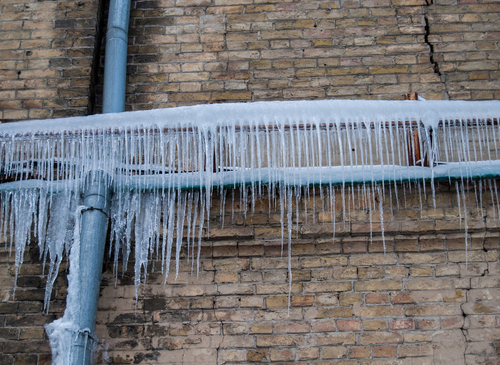Prevent Frozen Pipes in Winter: Expert Advice
Prevent Frozen Pipes in Winter: Expert Advice
Blog Article
On this page on the next paragraphs you can discover a good deal of outstanding insight in relation to Preventing and dealing with frozen pipes.

Cold weather can wreak havoc on your plumbing, particularly by freezing pipelines. Right here's how to prevent it from happening and what to do if it does.
Introduction
As temperatures decline, the threat of frozen pipelines increases, possibly leading to expensive repairs and water damage. Understanding just how to avoid frozen pipes is crucial for house owners in cold environments.
Understanding Frozen Pipes
What triggers pipes to freeze?
Pipes ice up when revealed to temperature levels below 32 ° F (0 ° C) for extended durations. As water inside the pipelines ices up, it broadens, putting pressure on the pipeline walls and potentially causing them to burst.
Dangers and problems
Frozen pipelines can lead to water disruptions, residential or commercial property damages, and pricey repair work. Ruptured pipelines can flooding homes and create considerable structural damages.
Signs of Frozen Pipes
Identifying frozen pipes early can stop them from breaking.
Just how to recognize icy pipes
Search for decreased water flow from taps, uncommon odors or noises from pipelines, and noticeable frost on subjected pipes.
Avoidance Tips
Protecting susceptible pipelines
Wrap pipes in insulation sleeves or use warmth tape to shield them from freezing temperature levels. Concentrate on pipes in unheated or external areas of the home.
Home heating techniques
Maintain interior areas properly warmed, especially locations with pipes. Open cupboard doors to permit cozy air to circulate around pipes under sinks.
Shielding Outdoor Plumbing
Garden hoses and exterior faucets
Separate and drain pipes garden hoses before winter season. Install frost-proof faucets or cover outdoor taps with protected caps.
What to Do If Your Pipelines Freeze
Immediate actions to take
If you believe frozen pipes, keep faucets open to ease pressure as the ice melts. Utilize a hairdryer or towels soaked in hot water to thaw pipelines gradually.
Long-Term Solutions
Architectural modifications
Think about rerouting pipes far from outside walls or unheated locations. Add extra insulation to attic rooms, basements, and crawl spaces.
Upgrading insulation
Purchase premium insulation for pipes, attic rooms, and walls. Appropriate insulation helps preserve consistent temperature levels and lowers the danger of icy pipes.
Final thought
Stopping frozen pipes calls for proactive procedures and fast responses. By comprehending the reasons, indicators, and preventive measures, house owners can shield their pipes during cold weather.
5 Ways to Prevent Frozen Pipes
Drain Outdoor Faucets and Disconnect Hoses
First, close the shut-off valve that controls the flow of water in the pipe to your outdoor faucet. Then, head outside to disconnect and drain your hose and open the outdoor faucet to allow the water to completely drain out of the line. Turn off the faucet when done. Finally, head back to the shut-off valve and drain the remaining water inside the pipe into a bucket or container. Additionally, if you have a home irrigation system, you should consider hiring an expert to clear the system of water each year.
Insulate Pipes
One of the best and most cost-effective methods for preventing frozen water pipes is to wrap your pipes with insulation. This is especially important for areas in your home that aren’t exposed to heat, such as an attic. We suggest using foam sleeves, which can typically be found at your local hardware store.
Keep Heat Running at 65
Your pipes are located inside your walls, and the temperature there is much colder than the rest of the house. To prevent your pipes from freezing, The Insurance Information Institute suggests that you keep your home heated to at least 65 degrees, even when traveling. You may want to invest in smart devices that can keep an eye on the temperature in your home while you’re away.
Leave Water Dripping
Moving water — even a small trickle — can prevent ice from forming inside your pipes. When freezing temps are imminent, start a drip of water from all faucets that serve exposed pipes. Leaving a few faucets running will also help relieve pressure inside the pipes and help prevent a rupture if the water inside freezes.
Open Cupboard Doors
Warm your kitchen and bathroom pipes by opening cupboards and vanities. You should also leave your interior doors ajar to help warm air circulate evenly throughout your home.

We had been made aware of that article about How to prepare your home plumbing for winter weather from a buddy on our other web page. So long as you enjoyed our blog posting plz consider to share it. We recognize the value of reading our article about 6 Ways to Prevent Frozen Pipes.
Call Today Report this page